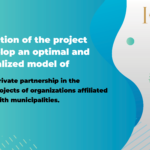Definition of Strategic Management
Strategic management refers to the process of identifying, evaluating, and selecting appropriate strategies to achieve organizational goals. This process includes analyzing the internal and external environments of the organization, identifying strengths and weaknesses, opportunities and threats, and developing suitable strategies to improve performance and competitiveness. This process helps organizations analyze their current situation, implement appropriate strategies, and evaluate the effectiveness of these strategies.
By utilizing strategic management, organizations can effectively respond to environmental changes, optimize their resources, and move towards their long-term goals. This approach not only aids in increasing efficiency and effectiveness but also fosters a strong and committed organizational culture. Consequently, strategic management is recognized as a key tool for success and sustainability in today’s competitive market.
By adopting strategic management approaches, organizations can achieve sustainable growth and success in various fields and be prepared for future challenges. This enables them to maintain their position in a dynamic and competitive market and engage in continuous development.
Strategic Planning
Strategic planning is a systematic and long-term process that helps organizations identify their goals and objectives and determine the path to achieve them. It also assists organizations in effectively responding to challenges and opportunities ahead and managing their resources in the best possible way. This process not only helps create a roadmap for the future but also strengthens internal coherence and coordination.
Strategic Management Process
1. Defining Mission and Vision: In this stage, the overall purpose of the organization, long-term goals, missions, vision, and a depiction of its desired future are determined to establish the direction and main motivations of activities.
2. Environmental Analysis: This stage involves examining internal and external factors and the capabilities of the organization that can impact its performance.
3. Setting Objectives: In this phase, short-term and long-term objectives aligned with the strategies are established, which should be consistent with the organization’s mission and vision.
4. Developing Strategies: At this stage, solutions and operational plans to achieve the set objectives are designed.
5. Implementing Strategies: This phase includes the execution of the developed strategies with resource allocation and activity management.
6. Evaluation and Control: In this stage, the organization’s performance is assessed based on established criteria to ensure that objectives are being met correctly and necessary adjustments are made if needed.
Necessity and Importance of Strategic Management
Strategic management and planning serve as a fundamental process in organizations, playing a vital role in determining long-term goals and establishing a clear path to achieve them. This process involves comprehensive analysis of the organization’s internal and external environment, accurate identification of opportunities and threats, and optimal allocation of human, financial, and material resources, allowing organizations to effectively adapt to changing market challenges and diverse customer needs. Furthermore, strategic planning enhances internal coherence, improves decision-making quality, and boosts competitiveness. Ultimately, this process enables organizations to achieve continuous improvement and innovation in their processes and strategies through ongoing performance evaluation and results assessment, thereby ensuring sustainability and success in complex and dynamic environments.
Purpose of Strategic Management
The purpose of strategic management and planning is to create a coherent and systematic framework for determining and realizing the organization’s long-term goals. This process involves identifying and analyzing the internal and external environment of the organization, including assessing strengths, weaknesses, opportunities, and threats (SWOT), helping managers design effective strategies to exploit opportunities and mitigate threats. Additionally, strategic planning leads to optimal resource allocation, enhances coordination among different departments, and improves decision-making processes, ultimately contributing to increased competitiveness and innovation within the organization. In conclusion, the goal of this process is to ensure the sustainability and growth of the organization in complex and changing economic environments.
Advantages of Strategic Management
Strategic management and planning offer numerous advantages that help improve organizational performance. First, this process leads to clarifying goals and priorities, enabling managers to make more informed decisions. Second, strategic planning, through precise analysis of the internal and external environment, helps identify opportunities and threats, making the organization more adaptable to market changes and customer needs. Third, this process leads to effective resource allocation, increased efficiency, and improved coordination among different organizational departments. Additionally, strategic management fosters a culture of innovation and continuous learning, enhancing competitiveness and organizational capabilities. Finally, continuous performance evaluation and alignment of strategies with environmental changes allow organizations to consistently improve and advance towards achieving their long-term goals.
Methods of Strategic Management
Strategic management and planning encompass several methods and models, each of which can assist organizations in determining and achieving their long-term goals. Below are some of the types of strategic management and planning methods:
– SWOT Analysis: This method identifies the strengths, weaknesses, opportunities, and threats of the organization. By analyzing these factors, the organization can design effective strategies to leverage strengths and opportunities while mitigating threats and weaknesses.
– PESTEL Model: This method analyzes political, economic, social, technological, environmental, and legal factors that can impact the organization’s performance. This analysis helps organizations identify and anticipate environmental changes.
– BCG Model (Growth-Share Matrix): This model evaluates the organization’s products or business units based on market share and market growth rate. This analysis aids in determining investment priorities and resource allocation.
– Porter’s Five Forces Model: This model analyzes competition in the industry and identifies the forces that affect competition, including the threat of new entrants, bargaining power of suppliers and customers, the threat of substitute products, and rivalry among companies.
– Scenario Planning: This method involves creating various scenarios for the future, helping organizations adapt to uncertainties and environmental changes. These scenarios can assist in identifying alternative strategies.
– Balanced Scorecard Model: This model helps organizations assess their performance from four perspectives: financial, customer, internal processes, and learning and growth. This approach aids in setting objectives and key performance indicators (KPIs).
– Change Management Model: This method helps organizations effectively manage strategic changes and reduce internal resistance. This model includes steps for identifying, planning, executing, and evaluating changes.
– Blue Ocean Strategy: This strategic management model, introduced in a book of the same name in 2005, describes how to create a market without competition. The main idea of this approach is that organizations should seek new, uncontested market spaces (blue oceans) rather than competing in saturated markets (red oceans). If organizations can create a blue ocean, it signifies a significant increase in value for customers and employees.
These methods enable organizations to formulate and implement appropriate strategies based on their specific conditions and needs.
Necessity of Using Hasib Software
Strategic management involves integrated decisions and activities for developing, executing, and controlling effective strategies. This process includes reviewing, evaluating, and selecting strategies and taking necessary measures for their implementation. Given the complexity of organizational goals and activities in today’s competitive landscape, the use of comprehensive and specialized strategic management software like Hasib is of great importance. This software facilitates the integration of all stages of strategic management, including objectives, strategies, and plans, making the connections between these stages easier. Additionally, organizations can utilize various models for strategic planning.
Features of Hasib Strategic Management Software
In the strategic management section, Hasib software provides extensive capabilities for defining and organizing the organization’s visions, missions, goals, strategies, and annual plans in a tree structure and without limitation. This feature allows managers and strategic planners to systematically and coherently structure all key elements of the organization and clearly observe the relationships between them. Moreover, this software facilitates the examination and analysis of the organization’s strengths and weaknesses. Through this analysis, the organization can identify environmental opportunities and threats and use this information to develop effective strategies.
Creating a strategic map is another capability of this software. This map helps the organization clearly outline the path to achieving its goals and strategies and serves as a tool for communication and alignment among all members of the organization. Additionally, prioritizing strategies is another key feature of this software. This capability helps managers identify and prioritize strategies that will have the greatest impact on the organization’s success based on the analyses conducted. As a result, using this software helps organizations conduct their strategic management processes more effectively and efficiently.












